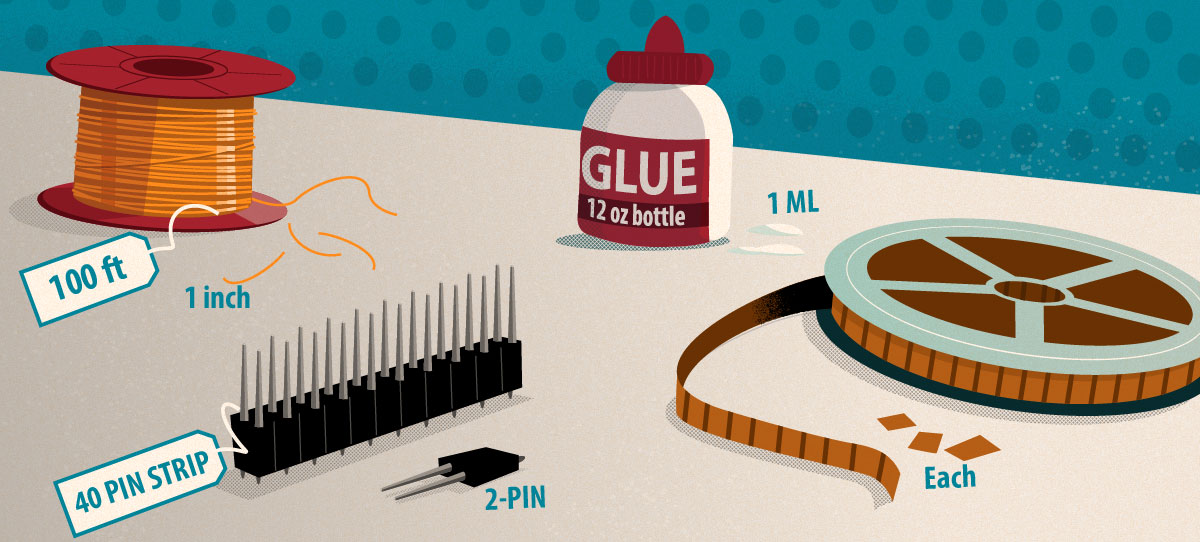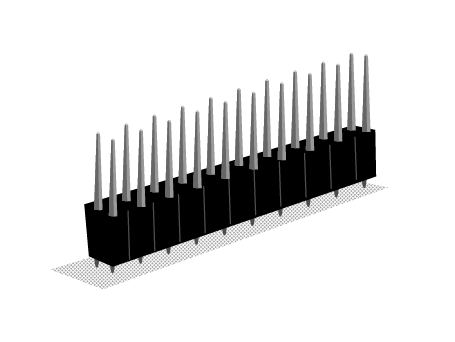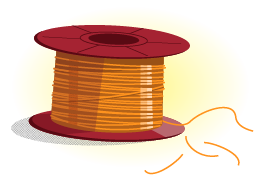A unit of measure is the defined standard of measurement for quantity of an item. The unit of measure establishes the basis by which the item is counted, weighed, or measured for use on a bill of materials, purchase order, or inventory.
This is a guide discussing the topic of units of measure as generally applicable to PLM and MRP systems. For more information specific to Aligni, please visit the Aligni documentation: Units of Measure.
Introduction
Like a graph without axis labels, a quantity without a unit of measure is just a head-scratching ambiguity. In many cases, the unit of measure can be inferred from context or is implicit in the reference to the item itself. But careful definition and handling of quantity is always preferred and should never be an imposition. All stakeholders from engineering to procurement and manufacturing appreciate concise, clear communication.
PLM and MRP systems use quantities and units of measure in many contexts, including:
- Line items on a bill of materials (BOM)
- Inventory amounts
- Purchase quantity
- Material requirements / shortages
- Usage per period of time
- Cost estimates and accounting
Improper specification or conversion of unit of measure can lead to all sorts of problems, from material shortages to misaligned mechanical components to crash landings on Mars or even embarrassing set design at rock concerts.
Some common examples of units of measure found in typical PLM / MRP datasets include:
- Counts: each, piece, pin, 10,000-foot spool, 40-pin strip, 25-pc bag
- Lengths: meter, inch
- Volumes: ounce, liter, cubic centimeter
- Weights: gram, pound
- Time: hour, minute
Note that, in the case of the counts in particular, some of the terms used contain an explicit unit conversion defined by the packaging of the item. For example, while a BOM may specify the number of millimeters of wire to use for an assembly, a vendor may prefer to deliver and price the wire as the packaged quantity. So 5 mm might be use the usage on a BOM, but the vendor would prefer a purchase quantity of One 10,000-foot spool over 3,048,000 mm even though they define the same length.
Choosing the Right Unit of Measure
The choice of a good unit of measure is often determined by industry norms, physical reality, and even culture and language. Take the word “each”, for example. Typically, the term “each” is used when specifying an indivisible quantity like a screw, resistor, or computer chip. In these cases, the item itself is functionally indivisible — you would never specify half of a computer chip on an assembly.
Supplier Packaging
Consider the case of socket head screws from McMaster-Carr. Their part number 91251A051 applies to a pack of 50 of this screw. On a purchase order, if you specified 1 each 91251A051, you would most likely receive 50 screws because the supplier’s terminology for that item code is in “packs of 50”. But what is the actual unit of measure? If your BOM calls for 3 each 91251A051, would that mean 3 screws or 150 screws? This ambiguity could result in significant confusion.

With a bit of forethought, you can avoid such pitfalls. What specific steps your organization chooses to take are open to debate and multiple solutions may be perfectly reasonable. The point is that if these situations are common, it makes sense to establish some conventions and follow them consistently.
Min/Mult or Unit of Measure?
Many items are quoted and purchased in packaged quantities that specify a minimum and multiple (min/mult) order quantity. This convention is typically conveyed from a supplier in their price offers. They may say, for example, “Price is $1.25 / each with a min/mult of 500/250” meaning that the price is valid for a minimum order quantity of 500 pieces and a multiple of 250 pieces above that. It’s important to distinguish the min/mult from the unit of measure.
There are several instances where it may be tempting to create a new unit of measure that appears to fit with an industry norm. For example, surface mount resistors are often sold and delivered in reels of 5,000 or more, so a suitable UoM may seem to be “5,000-pc tape & reel”. However, full reel quantities are almost never quoted or purchased in this way in the electronics industry. The parts are also inventoried in “each” as well. We do not suggest creating new units for packaging sizes when industry norms typically refer to “each” units. In these cases, it is better to follow the min/mult conventions.
Examples
We’ve collected a few concrete examples to illustrate some of these concepts. Each organization will likely have its own set of units of measure based on the industry, products, and opinions within. What matters most is that you choose a set of UoM that make sense, are easy to maintain, and facilitate clear and easy communication among all interested parties.
Example: Screws
McMaster-Carr is a popular catalog vendor for commodity mechanical hardware components such as screws, bolts, etc. The manufacturer part number (MPN) for many of their components is not readily available. Furthermore, their part number often refers to a package of the component rather than a per-piece code. In this case, you can define the MPN in your item master with an “-EACH” suffix to help clarify the reference.
| Mfg P/N | UoM | MCMASTER-CARR P/N | Buy Unit | Min | Mult |
|---|---|---|---|---|---|
| 91251A051-EACH | each | 91251A051 | pkg of 50 | 1 | 1 |
Example: Header Strips
Electrical pin headers are often shipped as “breakaway” modules that can be snapped to a selected length of pins. In these cases, the suppliers ship the modules in units such as 40-pin strip or 80-pin strip. During assembly, these strips may be snapped to form smaller sets of 6-pins or 1 pin, depending on the number of rows on the strip.
Since the supplier quotes and sells the complete strips, it makes sense to establish units of conversion for “40-pin strip” and “80-pin strip” and provide appropriate unit conversions to “1-pin”, “2-pin”, or “each”, depending on the appropriate indivisible quantity.
Careful use of this approach to units of measure can improve clarity when communicating with assembly personnel, engineers, and suppliers.
| Mfg P/N | UoM | Digi-Key P/N | Buy Unit | Min | Mult |
|---|---|---|---|---|---|
| PBC20DAAN | 2-pin | S2011E-20-ND | 20×2-pin strip | 1 | 1 |
| PBC36SAAN | 1-pin | S1011E-36-ND | 36×1-pin strip | 1 | 1 |
Example: Resistors (reel components)
Resistors are always used as single units (each), but are available to purchase in single units or 5,000-pc tape & reel. In this case, Digi-Key lists the reels as a separate vendor part number, but the purchase quantity is still each (i.e. to purchase a full reel, you order 5,000 pcs, not 1 reel). The min/mult is entered as 5,000 / 5,000 when quoting because Digi-Key offers a volume discount when buying in reels.
This is a case where we do not advise creating a “5,000-pc reel” unit of measure since it is not industry standard to refer to purchase quantities in this unit of measure. Instead, min/mult quantities are used.
| Mfg P/N | UoM | Digi-Key P/N | Buy Unit | Min | Mult |
|---|---|---|---|---|---|
| RT0603DRD074K7L | each | 311-4.7KDCT-ND | each | 1 | 1 |
| RT0603DRD074K7L | each | 311-4.7KDTR-ND | each | 5,000 | 5,000 |
Example: Wire (length conversion)
Wire is used in inch quantities on part lists. It is typically ordered in much larger spools, however. In this case, the vendor part number will list a different unit than the part itself so that orders are entered with the vendor’s units (such as 100-ft spool), but the product is consumed in smaller units as listed on the bill of materials (such as inches).
| Mfg P/N | UoM | Digi-Key P/N | Buy Unit | Min | Mult |
|---|---|---|---|---|---|
| 3055 BK001 | inch | A2064B-1000-ND | 1,000-ft spool | 1 | 1 |
| 3055 BK005 | inch | A2064B-100-ND | 100-ft spool | 1 | 1 |






